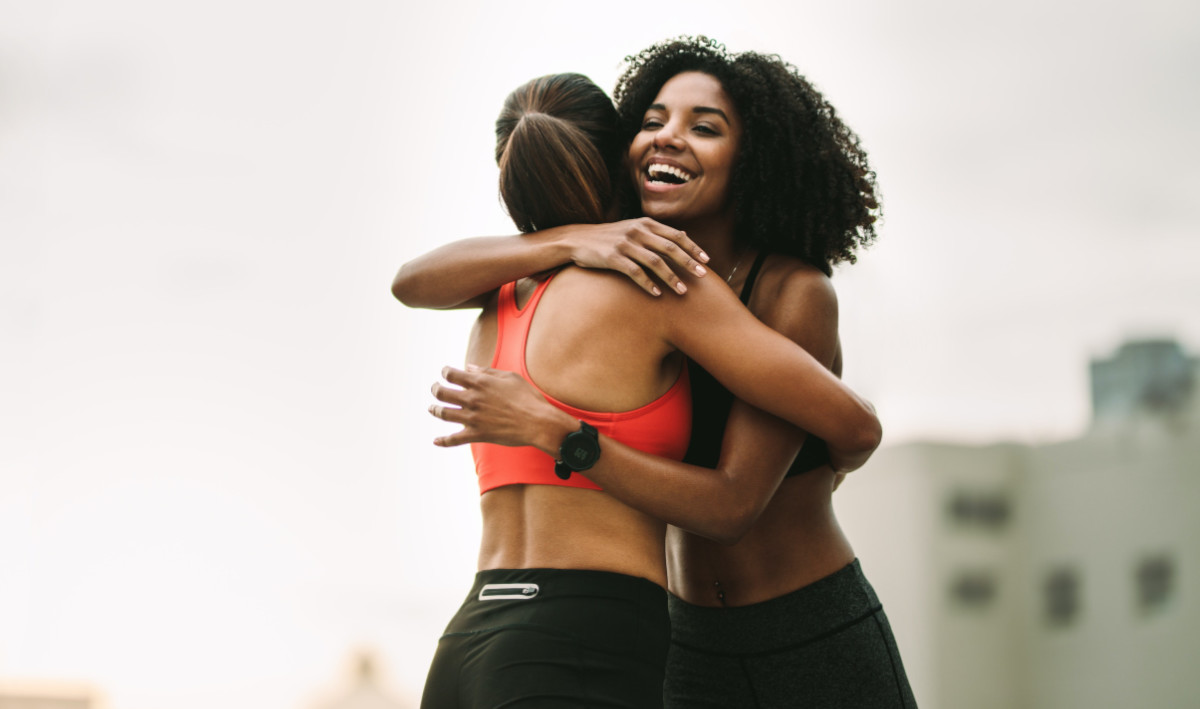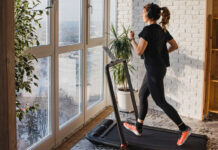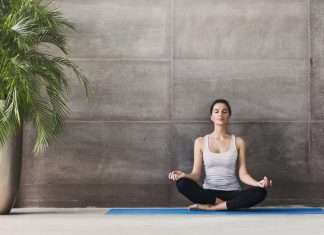Anyone who’s felt the post-workout high after feeling low or anxious knows only too well that the link between mental wellbeing and exercise is real.
“It can be tough to imagine digging out a pair of trainers to break a sweat when fear, anxiety, low mood or depression are present, but if you can muster up enough energy, courage and resilience to give it a go, you won’t ever regret it,” says fitness expert Laura Williams, who’s qualified in Advanced Anatomy and Physiology, and also holds an NCFE certificate in Mental Health Awareness.
“The relationship between exercise and our mental wellbeing is very complex,” she says, “and goes way beyond a bit of serotonin boosting. In reality, the scientists still don’t know exactly how it works, how the mechanisms are affected, but we’re looking at a powerful effect on neurotransmitters (important chemical messengers) such as GABA, glutamate and endocannabinoids.”
In a nutshell, these are important chemical processes that affect our mental health and can be affected by exercise.
“We can broadly divide exercise into two when using it to calm the contents of our head and improve our mental outlook,” Williams continues. “Aerobic exercise – the puff stuff – will generate those endorphins, help you to manage stressful situations and act as a great distraction.”
Then slower-paced exercise, including mobility and stretching exercises – particularly where there is a focus on your breathing – will help to ease any tension in the body and calm the nervous system, she notes. “And the distraction of performing the exercise, and staying focused on small movements, shouldn’t be underestimated. It will have a profound effect on anxiety and panic, if you can just get passed those first few minutes.”
Williams has created this short workout, divided into two sections, designed to help you cope with anxiety.
It starts with a pulse-raising, fitness-and-mood-booster, and is followed by a calming slower-paced section. Try doing this two to three times a week and she says you should feel its effects in as little as a fortnight.
Part I: The mood-boosting workout
Boosting blood flow with aerobic exercise increases energy, improves your response to stress and enhances your mood.
1. Jog to squat

What it does: Boosts fitness, works lower body.
a) Jog for three steps.
b) Jump feet apart and lower into squat.
c) Return to standing and repeat for one minute, gradually speeding up.
2. Jumping lunge
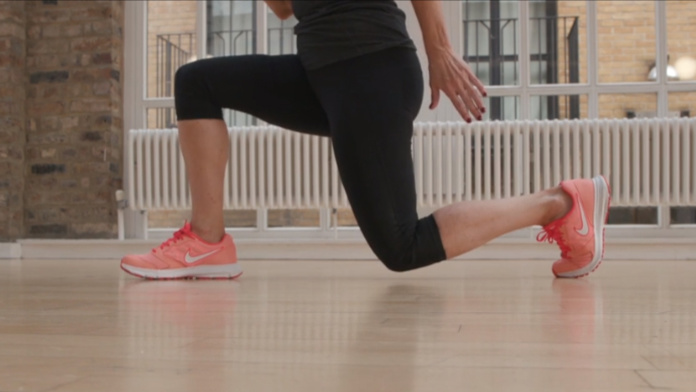
What it does: Raises heart rate, works lower body and core.
a) From a lunge position, jump into the air as you scissor legs to switch positions.
b) Use your arms to help maintain balance.
c) Push through the balls of your feet to work all the lower body muscles.
d) Do 20 lunges.
3. Speedy plank leg sweep
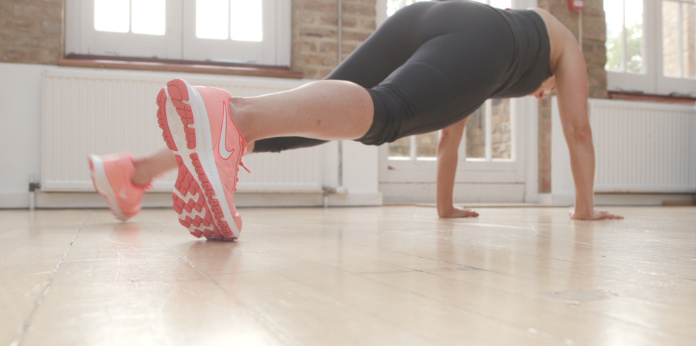
What it does: Boosts cardiovascular fitness, works core, upper and lower body.
a) From a push-up position, sweep your leg out to the side.
b) Briefly brush your big toe to floor.
c) Hop your foot back to the start position, and switch sides.
d) Perform for 30 seconds, repeat.
Part II: The calming workout
Slower-paced exercise shifts your attention to your movement and breathing, helping to ease racing thoughts, and generally soothing the nervous system.
1. Cat arch with leg pulse
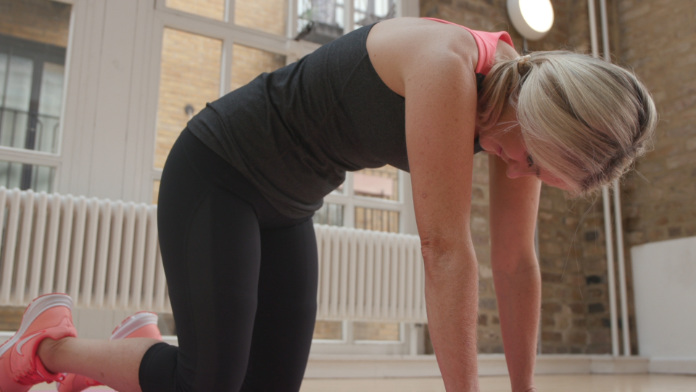
What it does: Eases back tension, strengthens core and glutes, relaxes.
a) From a kneeling position, round your spine and hold this position.
b) Breathing deeply, draw the stomach towards the spine.
c) Hold this contraction for three to five seconds.
d) Return to the start position and extend your leg and opposite arm in front of/behind you, and pulse for a count of three.
e) Repeat on other side.
f) Repeat whole sequence four times.
2. Shoulder bridge with leg raise
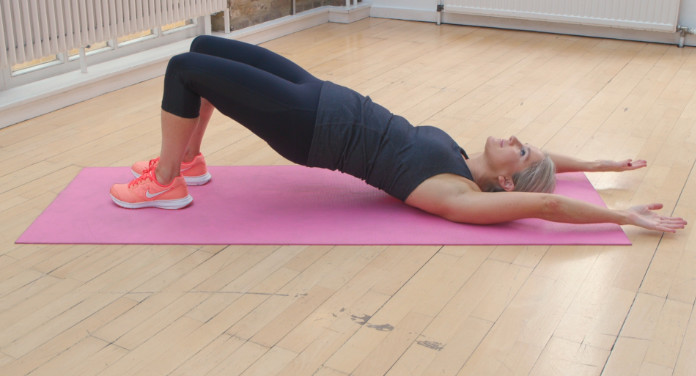
What it does: Helps prevent back pain, mobilises spine, works lower body.
a) From a lying position, lift your hips and back off the floor and extend arms behind head.
b) Maintaining a straight line from knees to shoulders, lift one leg and extend out in front of you, alongside other thigh.
c) Pulse for four, lower and repeat on other side.
d) Lower back down from bridge.
e) Repeat whole sequence four times.
3. Hip roll into upper back stretch
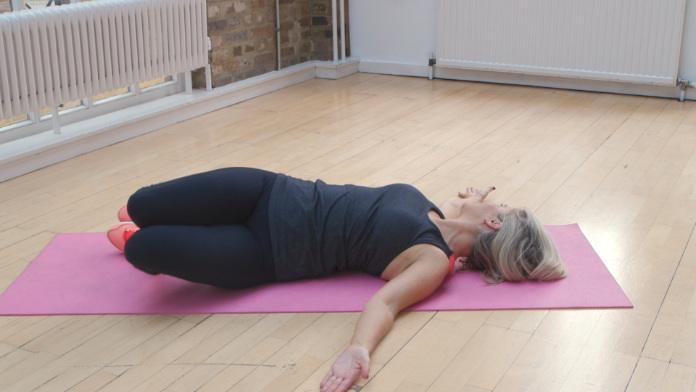
What it does: Eases tension in the whole body, improves flexibility in lower back.
a) Extend your arms out to sides and roll head one way, lower body the other.
b) Repeat to the other side.
c) Return to centre, extend your arms above your chest.
d) Lift your shoulder blades off the floor, reaching arms back behind you.
e) Circle your arms to return to hip-roll start position.
f) Repeat exercise five times.
Read more – Mindful breathing exercises – how to reduce stress and anxiety.























































